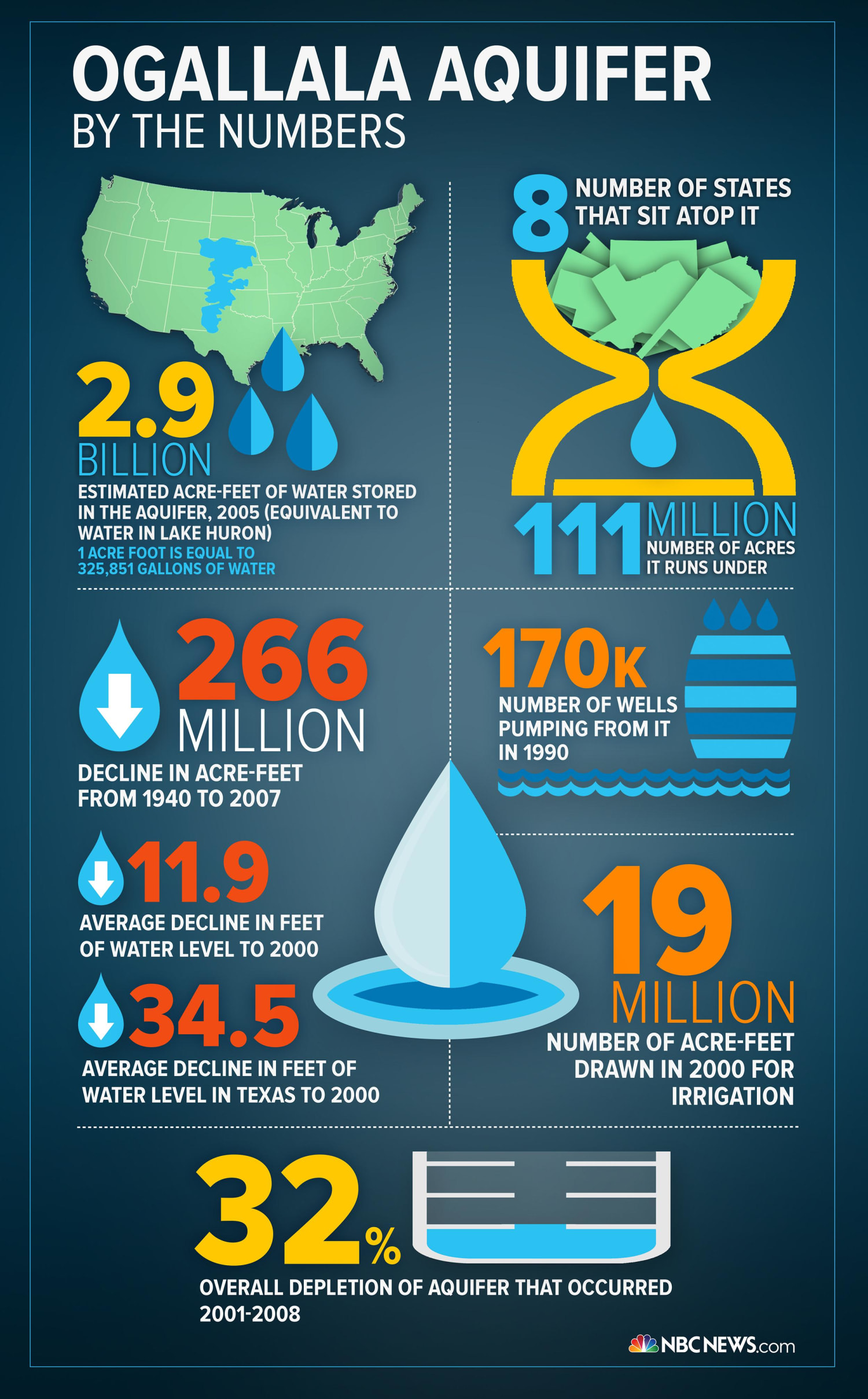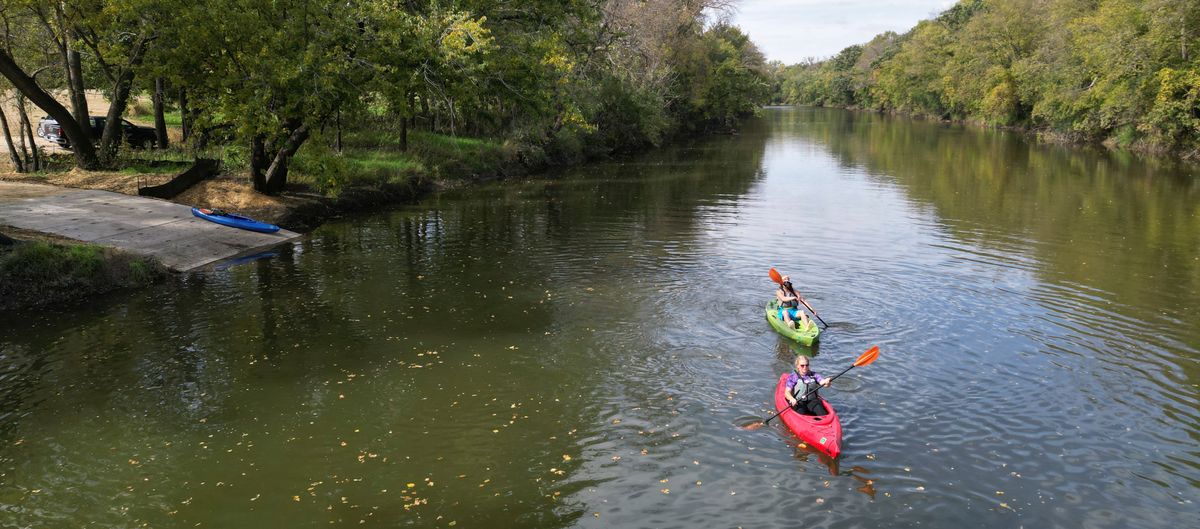Water Conservation: Why you should think it’s important – Fort Worth Report

Report on Sustainable Water Management in Tarrant County in Alignment with Sustainable Development Goals
1.0 Introduction: Population Growth and Water Scarcity Challenges
Tarrant County is experiencing significant population growth, adding an average of 59 new residents daily and developing approximately 50 acres of land weekly. This rapid urbanization presents challenges to the sustainable management of natural resources, particularly water, directly impacting the achievement of several Sustainable Development Goals (SDGs).
- Current Population (Tarrant County): 2,237,549
- Projected Texas Population (2070): 51.4 million
- Projected Annual Water Shortfall (2070): 7 million acre-feet (2.3 trillion gallons)
This projected deficit poses a direct threat to SDG 6: Clean Water and Sanitation, which aims to ensure the availability and sustainable management of water for all. The increasing demand from a growing population also strains urban infrastructure, a key concern of SDG 11: Sustainable Cities and Communities.
2.0 Analysis of Water Consumption and Inefficiency
A primary area of concern is the inefficient use of potable water for outdoor purposes, which undermines principles of SDG 12: Responsible Consumption and Production. Data indicates that a substantial portion of residential water is allocated to landscape irrigation, with a significant percentage being wasted.
- Up to 25% of potable water is consumed for outdoor use.
- An estimated 50% of irrigation water is wasted due to runoff.
This inefficiency highlights a critical need to improve water-use efficiency, a specific target under SDG 6 (Target 6.4), to address water scarcity and ensure sustainable withdrawals of freshwater.
3.0 Recommended Strategies for Sustainable Water Use
To mitigate the projected water shortfall and advance local sustainability, two primary strategies are recommended, focusing on ecosystem restoration and technological efficiency.
3.1 Promoting Native Flora for Ecosystem Health and Water Conservation
The adoption of native Texas plants in landscaping is a critical strategy that supports multiple SDGs. Native plants are adapted to the local climate and require significantly less water than non-native turf grass.
Benefits of Native Plants in Relation to SDGs:
- SDG 6 (Clean Water and Sanitation): Drastically reduces the need for irrigation, conserving billions of gallons of potable water.
- SDG 15 (Life on Land): Provides essential habitats for local wildlife, including pollinators like bees and butterflies, thus protecting and restoring terrestrial ecosystems.
- SDG 11 (Sustainable Cities and Communities): Reduces urban temperatures, improves air quality, and protects soil from erosion, creating more resilient and sustainable urban environments.
- SDG 12 (Responsible Consumption and Production): Decreases the reliance on chemical fertilizers and pesticides, preventing groundwater contamination and promoting sustainable consumption patterns.
3.2 Implementing Efficient Irrigation Techniques
The cycle-and-soak irrigation method is a technical solution for reducing water waste from runoff. This approach aligns directly with Target 6.4 of the SDGs by increasing water-use efficiency.
- The system applies water in several short cycles on the same day.
- A pause of approximately 30 minutes between cycles allows water to soak deep into the soil (6-8 inches).
- This process promotes deeper root development and minimizes wasteful runoff.
4.0 Local Initiatives and Policy Incentives
The Tarrant Regional Water District (TRWD) has implemented programs to encourage residents to adopt sustainable water practices, demonstrating a local commitment to achieving the SDGs.
TRWD Incentive Programs:
- Landscape Transformation Rebate: Offers an $85 rebate to residents who replace at least 125 square feet of turf with provided water-wise native plants. This directly incentivizes actions supporting SDG 6, SDG 11, and SDG 15.
- Residential Sprinkler Evaluation Program: A free service where a licensed irrigator inspects sprinkler systems and provides recommendations for improving efficiency, contributing to SDG 6.
- Weekly Watering Advice: A subscription service providing watering recommendations based on weather forecasts, promoting responsible water consumption in line with SDG 12.
5.0 Conclusion: Fostering a Culture of Conservation
Addressing the water challenges in Tarrant County requires a concerted effort to manage consumption responsibly. By adopting practices such as planting native species and optimizing irrigation, residents can directly contribute to the achievement of SDG 6 (Clean Water and Sanitation), SDG 11 (Sustainable Cities and Communities), SDG 12 (Responsible Consumption and Production), and SDG 15 (Life on Land). These individual and community-level actions are essential for ensuring long-term environmental sustainability and economic stability for the region.
Analysis of Sustainable Development Goals (SDGs) in the Article
1. Which SDGs are addressed or connected to the issues highlighted in the article?
The article addresses several SDGs by focusing on water scarcity, sustainable urban development, and ecosystem preservation in Tarrant County. The following SDGs are relevant:
- SDG 6: Clean Water and Sanitation: The core theme of the article is water conservation due to projected shortfalls. It discusses the high consumption of potable water for outdoor use and significant wastage, directly connecting to the sustainable management of water resources.
- SDG 11: Sustainable Cities and Communities: The article frames the issue within the context of Tarrant County, a rapidly growing urban area. It mentions the rate of population growth (“59 new residents a day”) and land development (“50 acres of land is developed weekly”), highlighting the pressures of urbanization on natural resources like water.
- SDG 12: Responsible Consumption and Production: The article advocates for changing consumption patterns, specifically regarding water use. It points out that “an estimated 50% is wasted as runoff” and encourages residents to be “mindful of their water consumption,” promoting efficiency and reducing waste.
- SDG 15: Life on Land: The proposed solution of using native Texas plants directly relates to this goal. The article states that native plants “protect the soil while providing habitats for birds, bees, butterflies and other wildlife” and “reduce the use of fertilizers and pesticides,” which helps prevent “groundwater contamination.”
2. What specific targets under those SDGs can be identified based on the article’s content?
Based on the issues and solutions discussed, the following specific SDG targets can be identified:
- Target 6.4: By 2030, substantially increase water-use efficiency across all sectors and ensure sustainable withdrawals and supply of freshwater to address water scarcity.
- The article directly supports this target by focusing on reducing water waste in landscape irrigation, where “up to 25% of potable water consumption is attributed to outdoor use.” Methods like the “cycle-and-soak sprinkler method” and incentive programs for sprinkler evaluation are aimed at increasing efficiency.
- Target 11.6: By 2030, reduce the adverse per capita environmental impact of cities, including by paying special attention to air quality and municipal and other waste management.
- The article addresses the environmental impact of a growing urban population on water resources. By promoting water conservation and the use of native plants that “clean our air and reduce temperatures in urban areas,” it aligns with efforts to mitigate the negative environmental effects of cities.
- Target 12.2: By 2030, achieve the sustainable management and efficient use of natural resources.
- The entire article is a call to action for the efficient use of water, a critical natural resource. It highlights a projected “shortfall of 2.3 trillion gallons of water” and proposes solutions to manage consumption better, such as switching to native plants and adopting efficient irrigation techniques.
- Target 15.1: By 2020, ensure the conservation, restoration and sustainable use of terrestrial and inland freshwater ecosystems and their services.
- The promotion of native plants is a direct effort to restore local ecosystems. The article notes that these plants “protect the soil while providing habitats for birds, bees, butterflies and other wildlife,” contributing to the health of the terrestrial ecosystem in Tarrant County.
- Target 15.5: Take urgent and significant action to reduce the degradation of natural habitats, halt the loss of biodiversity and, by 2020, protect and prevent the extinction of threatened species.
- By encouraging the planting of native species, the article supports the creation of habitats for local wildlife (“birds, bees, butterflies”). This helps combat the loss of biodiversity that can result from urbanization and the prevalence of non-native turf grass.
3. Are there any indicators mentioned or implied in the article that can be used to measure progress towards the identified targets?
Yes, the article mentions or implies several quantitative and qualitative indicators that can be used to measure progress:
- Indicator for Target 6.4 (Water-use efficiency): The article provides a baseline for water waste, stating “an estimated 50% is wasted as runoff.” A reduction in this percentage would be a direct indicator of increased efficiency. The “Weekly Watering Advice” service provides a tool to track and manage water application, which can be measured.
- Indicator for Target 11.6 (Environmental impact of cities): The rate of land development, “approximately 50 acres of land is developed weekly,” is an indicator of urban expansion. Progress could be measured by tracking the percentage of this newly developed land that utilizes water-wise landscaping instead of traditional turf.
- Indicator for Target 12.2 (Efficient use of resources): The projected “annual shortfall of 7 million acre-feet of water” serves as a key indicator of unsustainable consumption. Measuring the actual water consumption against projections over time would indicate the effectiveness of conservation efforts.
- Indicator for Target 15.1 & 15.5 (Ecosystem restoration and biodiversity): The TRWD’s incentive program provides a measurable indicator: the area of turf grass replaced by native plants. The article specifies a target of “125 square feet of grass” per participant. The total square footage converted across the county would be a key progress metric. The reduction in the “use of fertilizers and pesticides” is another implied indicator for reducing groundwater contamination and protecting ecosystems.
4. Summary Table of SDGs, Targets, and Indicators
| SDGs | Targets | Indicators |
|---|---|---|
| SDG 6: Clean Water and Sanitation | 6.4: Substantially increase water-use efficiency and address water scarcity. |
|
| SDG 11: Sustainable Cities and Communities | 11.6: Reduce the adverse per capita environmental impact of cities. |
|
| SDG 12: Responsible Consumption and Production | 12.2: Achieve the sustainable management and efficient use of natural resources. |
|
| SDG 15: Life on Land | 15.1 & 15.5: Ensure conservation and restoration of terrestrial ecosystems and halt biodiversity loss. |
|
Source: fortworthreport.org

What is Your Reaction?
 Like
0
Like
0
 Dislike
0
Dislike
0
 Love
0
Love
0
 Funny
0
Funny
0
 Angry
0
Angry
0
 Sad
0
Sad
0
 Wow
0
Wow
0












































































